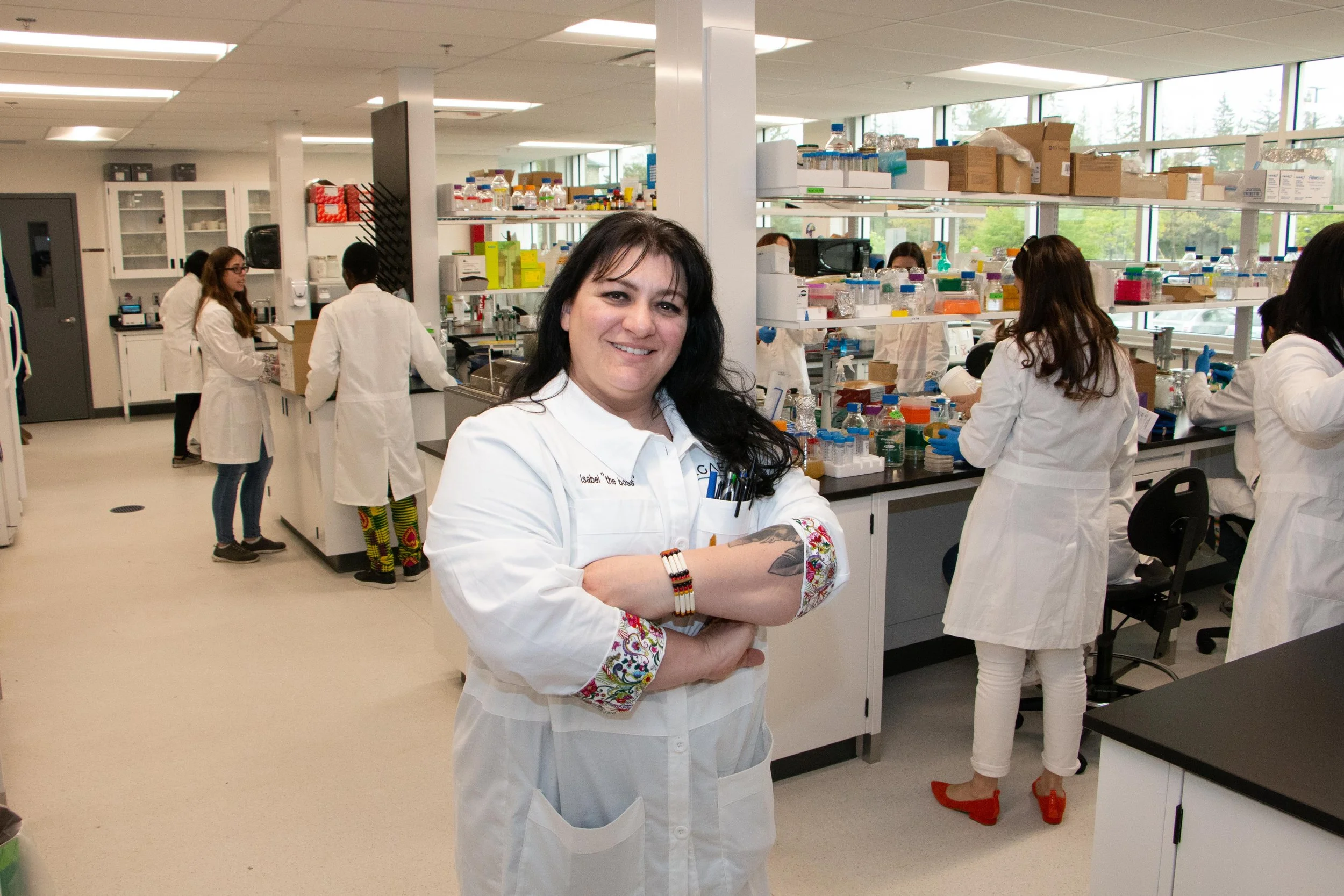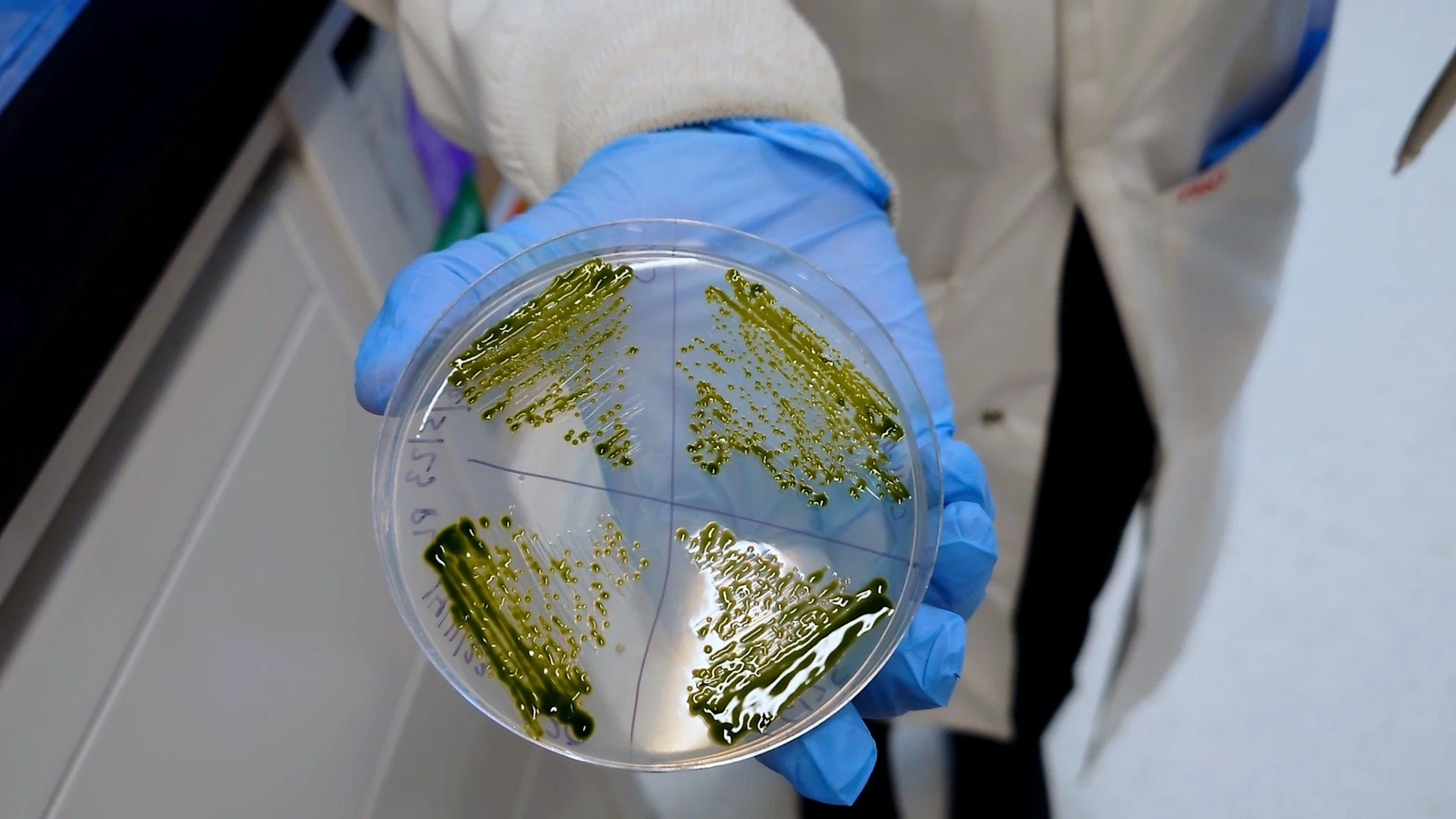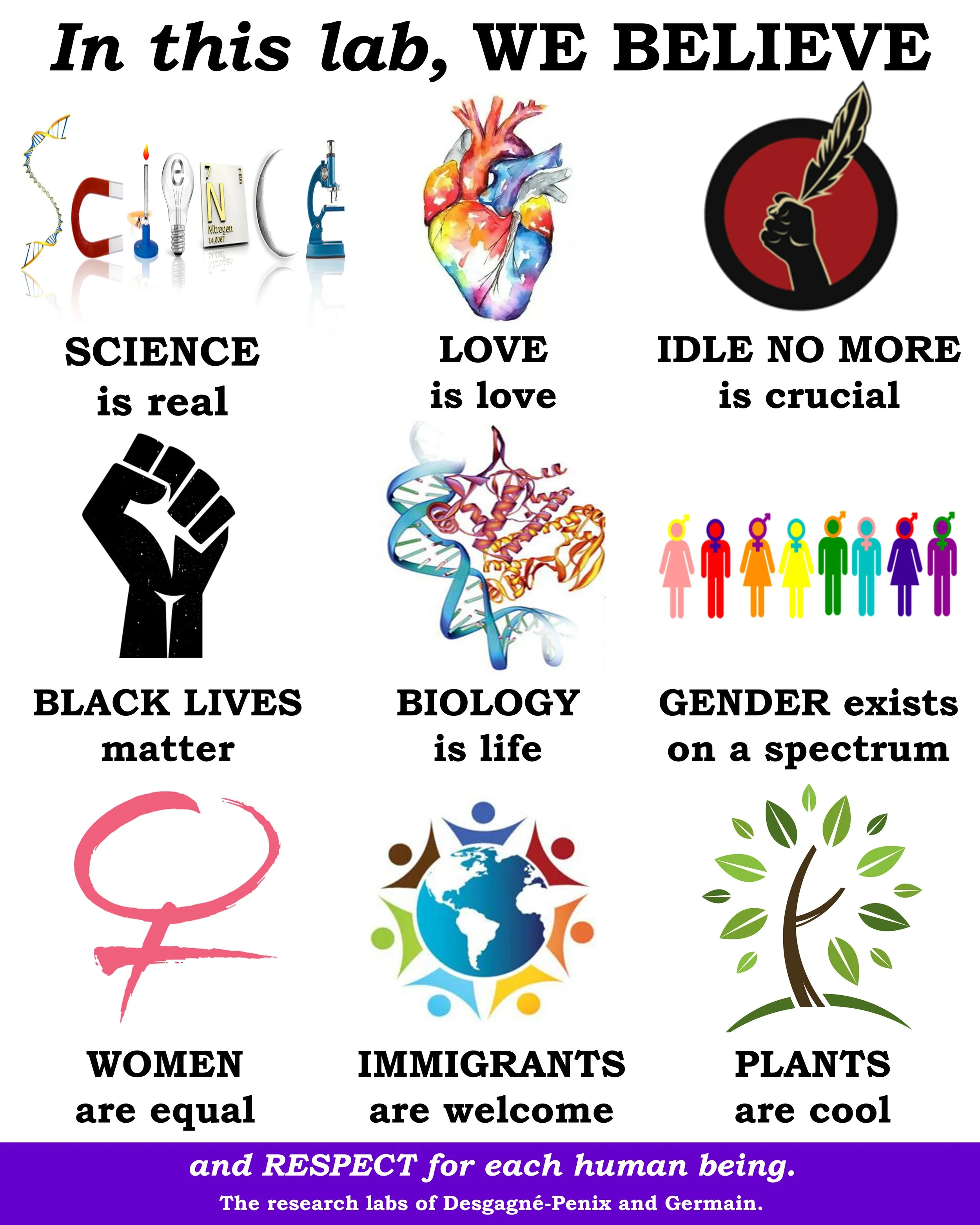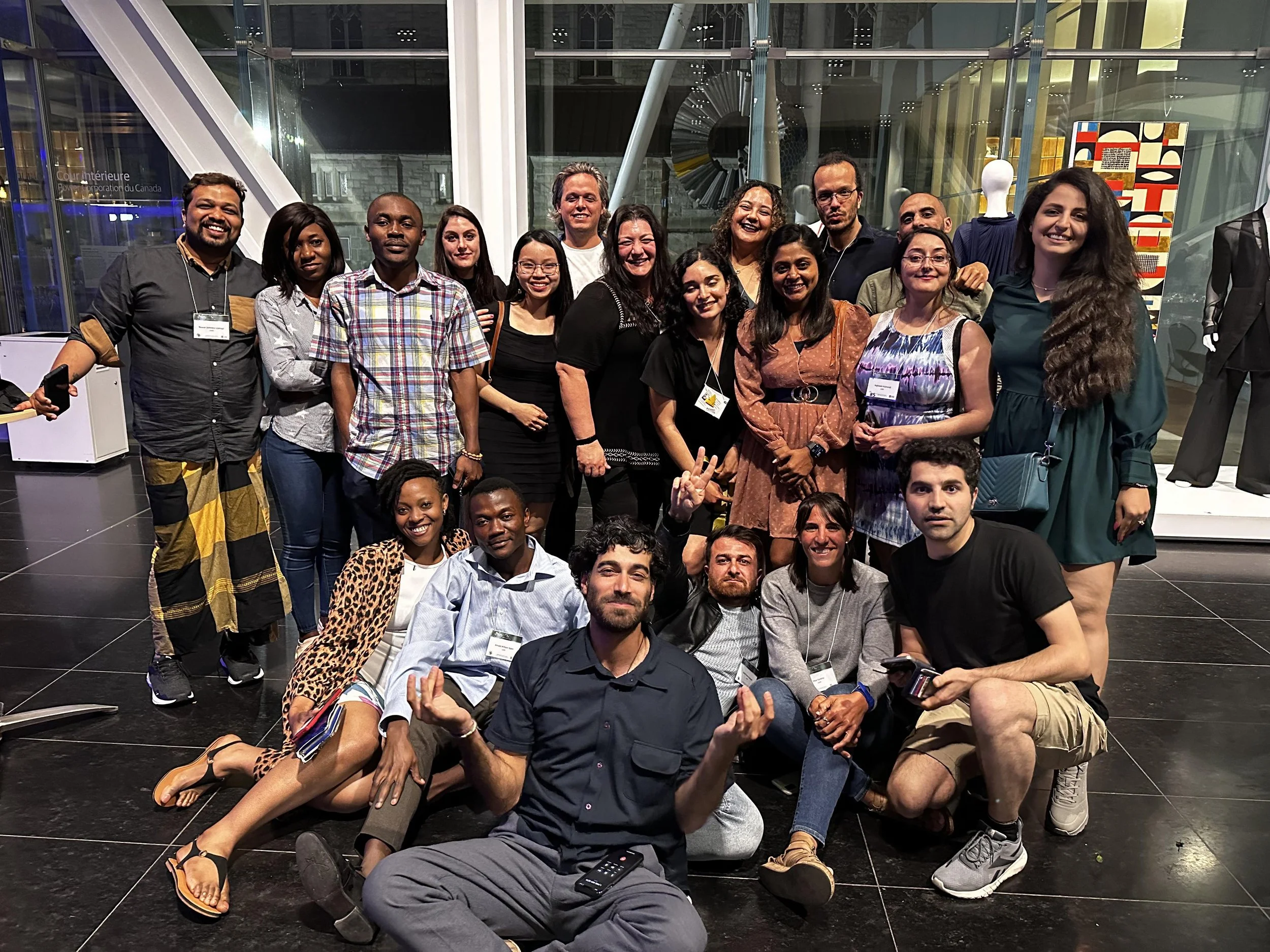Quick Chat with Prof. Isabel Desgané-Penix
By Emma Lindsay - June 20th, 2024
Dr. Isabel Desgagné-Penix is a professor in the Department of Chemistry, Biochemistry, and Physics at the University of Québec at Trois-Rivières (UQTR). She completed her PhD in Cell and Molecular Biology at the University of Texas at San Antonio and her post-doc in plant biochemistry and metabolism at the University of Calgary. Her research uses synthetic biology to construct and analyze plant metabolic pathways in microalgae to produce phytomolecules.
Can you tell me about yourself and your research?
I have been a professor for a little bit over 10 years, specializing in metabolic engineering. In synthetic biology, I am an end user, using a synthetic biology platform to produce specialized metabolites of interest or validate the pathways of plant specialized metabolism. We use microalgae, specifically the green microalgae Chlamydomonas reinhardtii and the diatom Phaeodactylum tricornutum. These are among the few microalgae for which we have tools in synthetic biology. In the green algae, we insert DNA into the nuclear genome, while in diatoms we can either insert it into the nuclear genome as well or we can keep it episomal and introduce large fragments using bacterial conjugation. When we are introducing a full metabolic pathway with many steps, we use a large amount of DNA, and we prefer to keep it extrachromosomal. As we use these tools and technology advances, we realize there is still a lot to learn about our systems to effectively use them in synthetic biology. That is what's great about it, as we try things, we discover new processes.
Why did you choose to use microalgae as a model for your research?
When I started 10 years ago, I had done a postdoc working on systems biology to elucidate pathways that were used for synthetic biology in yeast. I was super interested in that. Although my expertise is in plant specialized metabolism, I also wanted to use synthetic biology to validate the pathways and produce compounds of interest. In yeast, you have a lot of tools but also many challenges. Often, the pathways I'm interested in, involve different compartments like the chloroplast and the vacuole, which in yeast they don’t necessarily exist or need to be created. Creating yeast platforms is not my expertise, so I thought why not use a single cell microalgae platform? That is why we chose microalgae, because it is an eukaryotic organism and can perform all the post-translational modifications that the enzymes need. It also contains all the compartments needed to build a very complex plant metabolic pathway. Another reason for choosing microalgae is my commitment to making a better future, being conscious of carbon emissions and sustainable production. Microalgae offers this advantage, as they can detoxify the air and don’t require large sugar or carbon sources except cardon dioxide. That makes it a very interesting production platform.
What inspired you to work with plant metabolism and phytomolecules?
This was a long time ago when I was a little girl. Women in my community used to prepare these remedies using roots or leaves for various ailments. I was fascinated by this, and I always loved science, wondering what was in these grandmother remedies. This curiosity led me to the world of biochemistry. I wanted to go into medicine, but I was not accepted, so I chose immunology and microbiology instead, completing my master’s and PhD. During my PhD, I worked with an amazing professor that specialized in plant metabolism. Her enthusiasm reignited my interest in plants and plant molecules. Her interest was contagious. I realized I could combine science with working on medicinal plants and I thought that was so great. When I became a professor, I really wanted to continue with that.
What techniques are you using to study and manipulate plant metabolic pathways in microalgae?
Chlamydomonas reinhardtii transformed strain.
Any molecular biology technique used in metabolic engineering and synthetic biology in bacteria or yeast you can use in microalgae. We often try to screen or clone like you would in yeast, but we tag it with a fluorescent protein and use flow cytometry or fluorescent microscopy to identify positive transformants. We use a lot of biochemistry and have an advanced analytical platform, including mass spectrometry and NMR, to determine whether the microalgae produce the desired compound, because microalgae might perform unexpected reactions. For instance, we recently published research on producing cannabinoids in microalgae. We were successful in producing cannabinoid precursors and some cannabinoids, but we also detected other compounds that look like cannabinoids but are not known to nature. We were also working with a company wanting to produce specific THC or CBD molecules so we have analytical platforms that can detect these molecules. Our lab employs various techniques, including biochemistry, mass spectrometry, organic chemistry, and bioinformatics. Some students also work on medical biology projects, such as testing for antivirals or antimicrobials from various medicinal plants.
Can you discuss potential industrial applications of your research?
We have been working with industrial partners to produce specific molecules they need such as cannabinoids, pharmaceutical compounds, or antiviral compounds. I hope our platform will be viable for producing very complex compounds. For instance, one of them is used to treat the symptoms of Alzheimer’s disease. Our goal is to have it commercialized and ensure its produced sustainably.
You have your lab and your team, what do you look for in your students when you're recruiting people to your team?
Of course, they need to be independent, capable of taking guidelines, deciding the next steps, and thinking ahead. They should be genuinely interested in their work, with their enthusiasm being contagious. I want my students to be self-motivated in their research. It is important they understand how the lab operates and have a solid grasp of molecular biology and biochemistry. In my lab, we believe in the Equity, Diversity and Inclusion principles such as woman are equal, gender exists on a spectrum, black lives matter, Idle no more, etc. It is important that my students are sensitive to these issues and live by them. Everyone has a place in the lab and everyone should feel comfortable regardless of their background, identity, culture, religion, or goals. We also prioritize environmental protection. For example, we have a machine to wash and reuse our tips, which is a lot of work for the team members but helps reduce plastic usage. I believe in these principles and I want the people in my lab to be just as committed.
What have you found to be the biggest obstacle in studying the metabolic pathways in microalgae?
There are many unknowns, and sometimes we lack the steps needed to understand certain processes. Unknown chemical reactions, especially complex ones, are particularly challenging. Epigenetics and silencing also. However, it is very rewarding when we can elucidate these steps.
What advice would you give to young researchers who are aspiring to enter the field of synthetic biology?
I know they have these iGEM competitions and various scholarships. Before getting involved and joining a lab, it is a good idea to know what you want to achieve and what you want to do. Research and inform yourself about which lab you could join, so you are not surprised when you arrive. For example, students who come to my lab may not do as much synthetic biology as they would in a lab that works with yeast and bacteria. It is important to be informed about where you are going and what you will be working on. Sometimes students do not always have this liberty, but if given the choice, go to a place that aligns with what you want to do.
How do you think synthetic biology will impact the future?
Synthetic biology is very important for the future, although I am biased. It is a new flavour/colour of science. It could help with a lot of issues that the world has today, whether it is pollution, medicine, agriculture, or even societal issues. It spans from fundamental research to various applications and commercialization's. Everybody can have a place in synthetic biology.
Dr. Isabel Desgagné-Penix's research in plant specialized metabolism using microalgae advances the synthesis of valuable phytomolecules. Her inclusive lab environment prioritizes sustainability and is dedicated to furthering synthetic biology for a better future.




